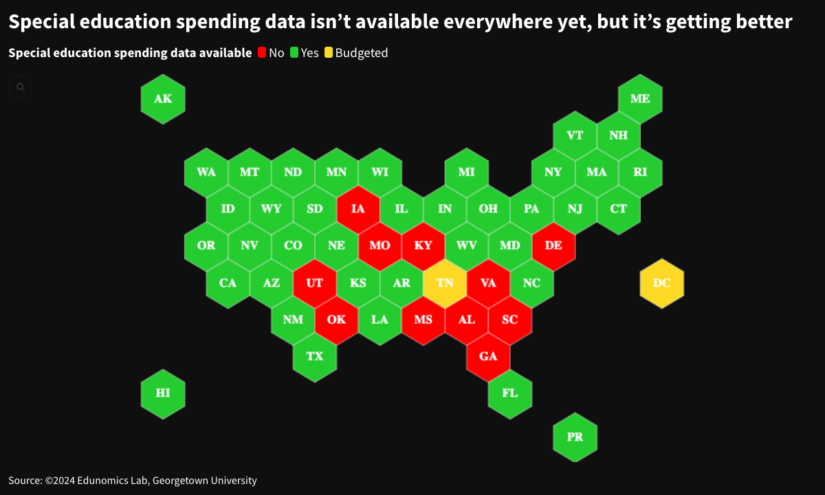Reflecting on the tenets that shape our educational practices is fundamental for …
Researchers Find No Correlation Between Higher Special Education Funding and Improved Outcomes
Emma Wordsmith

According to Marguerite Roza, director of Georgetown University’s Edunomics Lab, an initial review of new special education data sets reveals significant disparities in how states identify children requiring services, the funding allocated, and the impact on outcomes.
While the study is in its early stages, Roza emphasized that the rising number of students with disabilities over the past decade, coupled with the increasing share of school budgets allocated to special education, warrants closer examination.
Addressing policymakers, educators, and journalists, Roza highlighted the historical lack of scrutiny on special education spending compared to other areas of district budgets.
States that prioritize effective literacy instruction for all students tend to achieve higher reading scores among special education students, as evidenced by Mississippi’s remarkable progress in literacy attributed to a decade-long effort to implement evidence-based reading strategies in classrooms.
Despite budgeting only 8% for special education, Mississippi excels in reading performance for students with disabilities, ranking among the top states in reading on the National Assessment of Educational Progress.
In contrast, Connecticut’s nearly 22% allocation to special education translates to average reading proficiency among students with disabilities, with over half of third graders reading below grade level and a delayed implementation of a science-based literacy program.
Notably, specific learning disabilities, which include dyslexia and other neurological challenges affecting language and math skills, constitute the most prevalent special education diagnosis, underscoring the significance of quality literacy instruction in reducing the need for individualized education programs.
Effective core literacy programs can potentially decrease the reliance on individual education plans for students with disabilities, emphasizing the importance of early detection and intervention for struggling readers.
The National Center for Education Statistics began gathering data on district-level special education expenditures in the 2019-20 academic year, highlighting discrepancies between states in reporting financial data for special education services.
During the period from 2013-14 to 2022-23, the number of children in special education increased from 6.5 million to 7.5 million, despite a decline in overall public school enrollment.
Significant variability in diagnoses across states raises concerns about subjective practices in identifying students for special education services, with disparities in literacy outcomes among states like New Mexico despite high prevalence of learning disorders.
Divergent practices in speech and language services, diagnostic categories, and staffing ratios among states underscore the need for consistency in special education delivery, teacher qualifications, and resource allocation to ensure equitable access and optimal student outcomes.
Roza emphasizes the importance of addressing staffing shortages, enhancing teacher qualifications, and improving transparency in special education spending to better serve students with disabilities and promote academic success.



